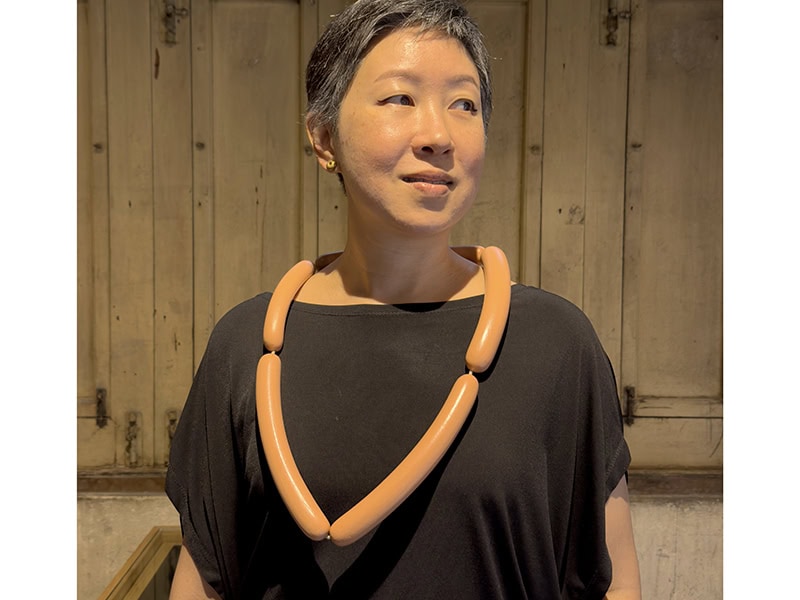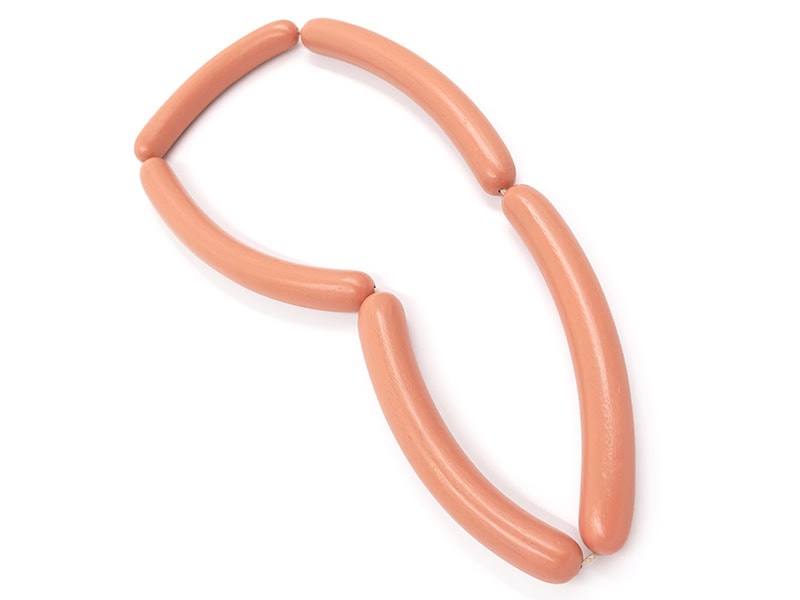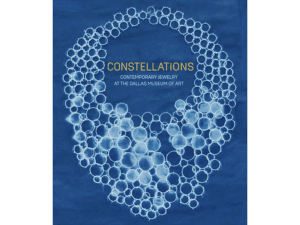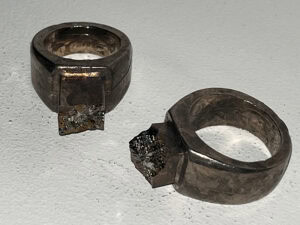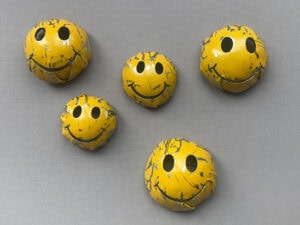 “Inside the Jewelry Box” offers a glimpse into the jewelry collections of members of our community. Collectors, curators, gallerists, artists, and others will be featured. Suggest someone whose jewelry collection you’d like to see by emailing Jennifer Altmann, here.
“Inside the Jewelry Box” offers a glimpse into the jewelry collections of members of our community. Collectors, curators, gallerists, artists, and others will be featured. Suggest someone whose jewelry collection you’d like to see by emailing Jennifer Altmann, here.
A David Bielander necklace of frankfurters and a Karl Fritsch ring with a hidden diamond are some of Atty Tantivit’s favorite pieces because of the interactions and curiosity they provoke. Tantivit opened ATTA Gallery, in Bangkok, in 2010. Since 2021, the gallery exhibits contemporary jewelry alongside contemporary textiles, ceramics, paintings, and drawings, “so people get used to seeing jewelry with other media of visual art,” she says. “I think that’s the way to reach out to a broader audience.”
Tantivit’s first career was in marine resource management. But she felt the pull of jewelry-making and eventually pursued a graduate gemologist certificate. After having trouble finding a place to sell her own jewelry, she decided to open a gallery.
ATTA Gallery is the first in Thailand to specialize in contemporary jewelry. The gallery represents Peter Bauhuis, Sigurd Bronger, Jiro Kamata, and Märta Mattsson, among other artists.
“It’s a conversation starter,” Tantivit says of this necklace, which looks like linked hot dogs draped around her neck. “A friend came to an opening knowing I would wear this, and he made his own necklace out of hot dog buns” as a match for it. Bielander’s necklace is made of wood repurposed from the curved back of a Thonet chair.
Bielander, the 2010 winner of the Herbert Hofmann Prize—considered the highest honor in contemporary jewelry—loves to use humor in his work while elevating mundane subjects. The Swiss artist is based in Munich.
“I’m always drawn to material, and to thinking about why an artist chooses to work with a particular material,” Tantivit says. “You wouldn’t think this would be made from an old chair.”
ALSO IN THIS SERIES
A Peek into the Collection of Artist Helen Britton
A Peek into the Collection of Jewelry Artist Tanya Crane

The diamond in this ring is set inside a tiny bowl, with the top of the diamond facing the wearer. When you look at the top of the hand, the diamond isn’t visible. “It’s a hidden thing that only the wearer knows—it’s a little secret I want to keep,” Tantivit says.
Fritsch, a German artist known for his rings, embraces playfulness and irreverence in his work.
Tantivit bought the ring for herself. “The idea of women buying diamond rings for themselves is empowering,” she says. The ring’s color has changed over time as the remains from the mold—left in place by the artist—have fallen away. Fritsch told Tantivit, “Time will show that it’s gold.” Says Tantivit, “I think that’s quite special.”
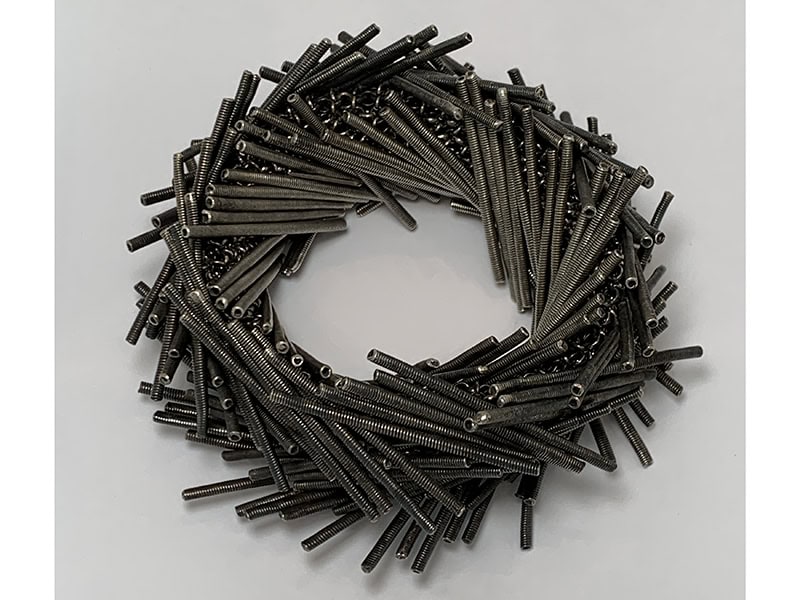
Tantivit encountered this bracelet unexpectedly on a visit to Norway, when artist Nanna Melland brought her to Galleri Riis, which represents sculptural works by Tone Vigeland. The Norwegian artist is one of the most important figures in the Scandinavian studio jewelry movement.
Tantivit asked about Vigeland’s jewelry and was shown a classic example of her technique, a sterling silver mesh bracelet adorned with oxidized rods made from silver thread, which Vigeland spun in her studio. It was small, but it fit Tantivit’s wrist. Tantivit left it behind, but “I couldn’t stop thinking about it,” she says. She called the gallery and asked if it was for sale. It was. Vigeland died in 2024 at the age of 85.
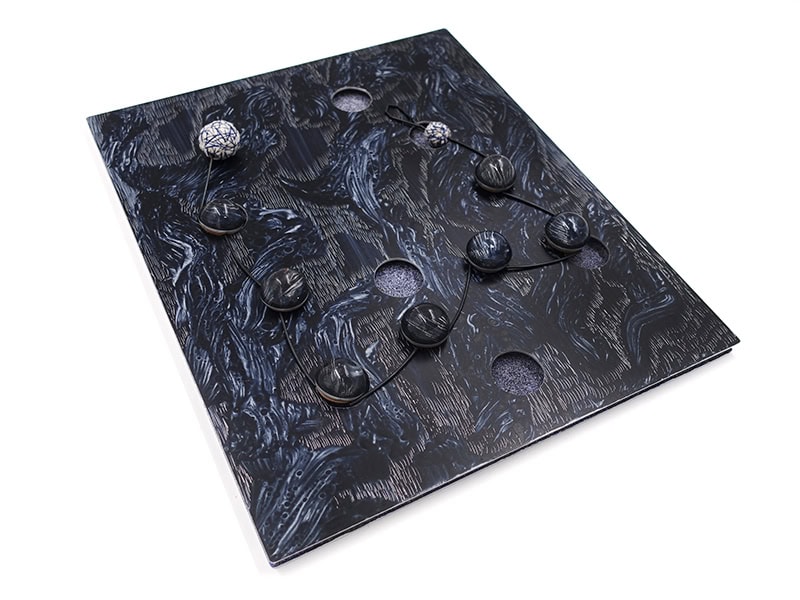
This piece comes to life as a manifestation of Beppe Kessler’s loves of painting, jewelry, and textiles. The necklace is made of circular cut-outs from the artist’s painted metal wall piece, which have been topped with clear acrylic and strung on silk cord. The necklace’s closure, a textile ball, nods to Kessler’s education in textile design. The internationally known artist, who has worked in the visual arts for more than 40 years, lives in Amsterdam. Her paintings are often in dialogue with her brooches and necklaces.
“It’s a simple piece, unique and poetic, and it crosses the boundary between jewelry and fine arts,” Tantivit says. “I like the idea of working back and forth between practices.”
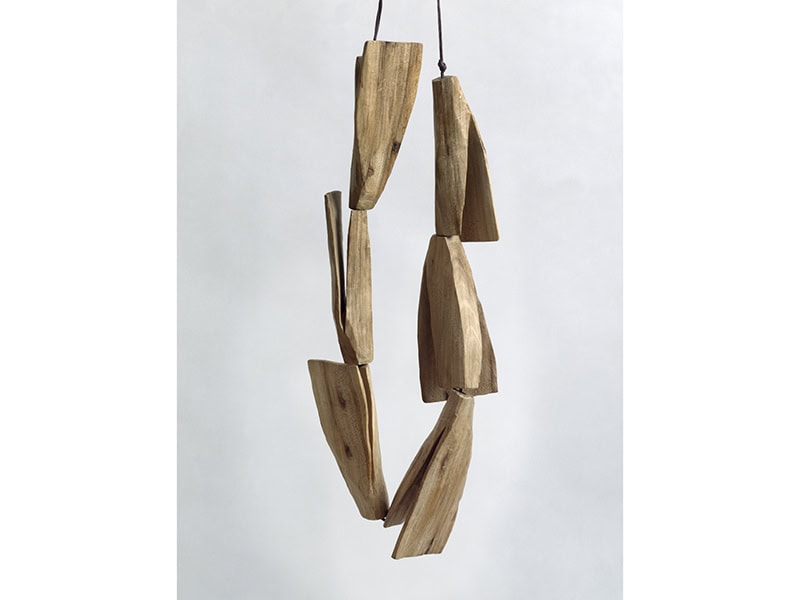
Tantivit first saw the work of German jewelry artist Dorothea Prühl at the Pinakothek der Moderne museum, in Munich. “This piece is wood, hand carved and very rough,” Tantivit says. “You can make wood smooth, but she left it quite rough to show the texture of the material. She’s not hiding it under paint or lacquer.”
A giant in the field of contemporary jewelry, Prühl is known for bold, sculptural pieces made with wood and metal. Tantivit has been enchanted by Prühl’s work for years. “She creates beautiful pieces that have their own souls,” Tantivit says. “Every single piece of hers speaks to me differently.”
We welcome your comments on our publishing, and will publish letters that engage with our articles in a thoughtful and polite manner. Please submit letters to the editor electronically; do so here.
© 2024 Art Jewelry Forum. All rights reserved. Content may not be reproduced in whole or in part without permission. For reprint permission, contact info (at) artjewelryforum (dot) org

